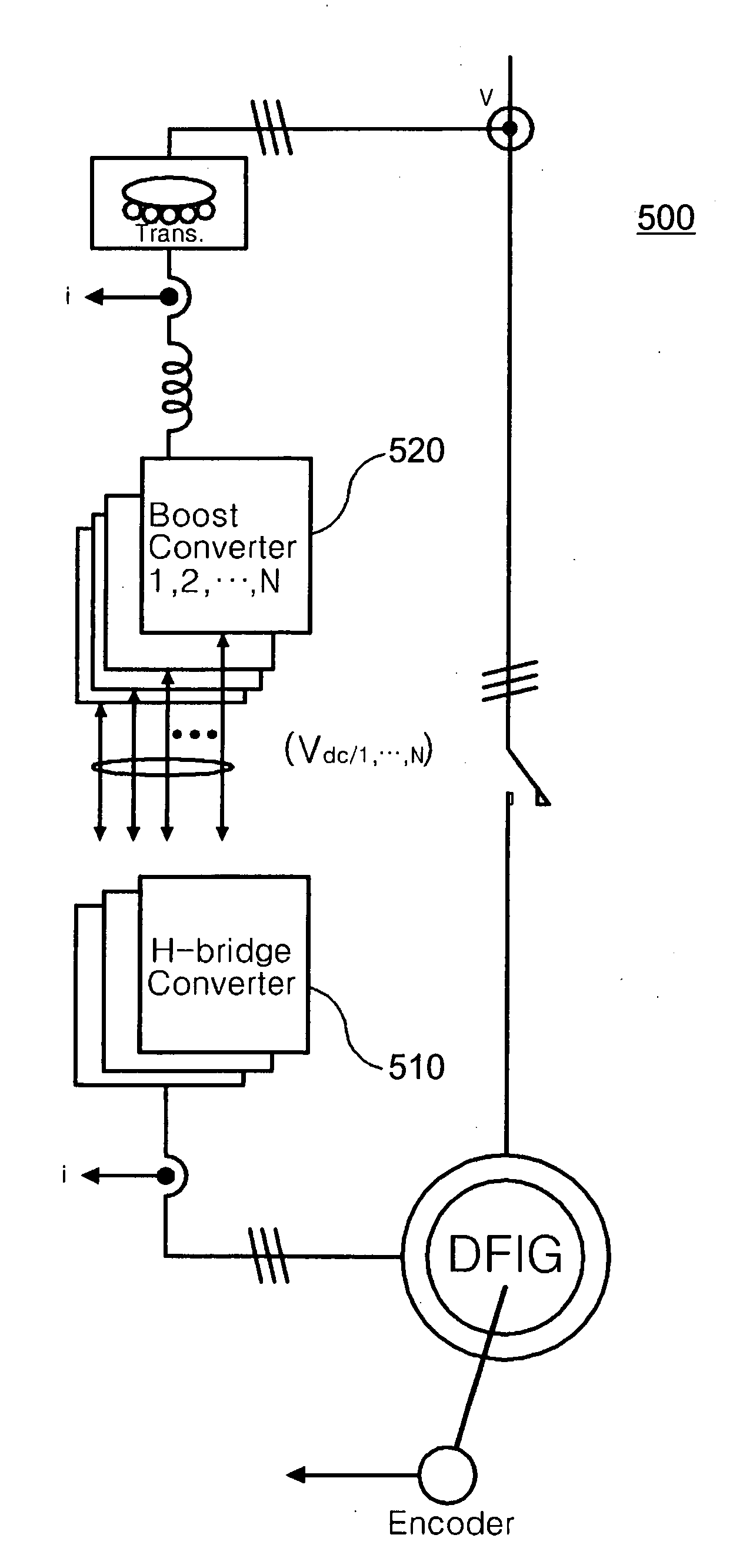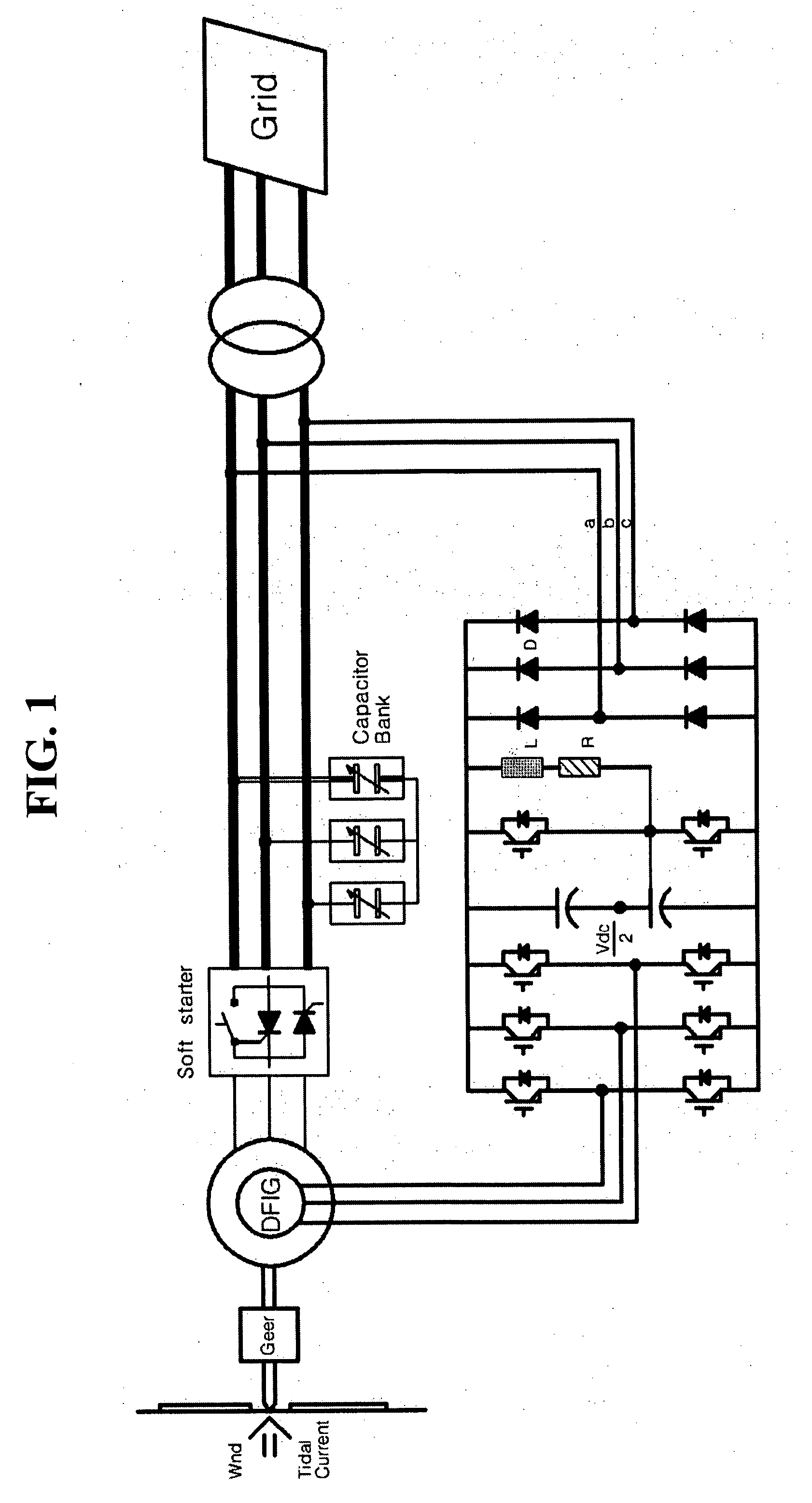Controller of doubly-fed induction generator
a doubly-fed induction generator and control device technology, which is applied in the direction of electric generator control, dynamo-electric converter control, dc-ac conversion without reversal, etc., can solve the problem that the power factor of the stator side of the doubly-fed induction generator cannot be directly controlled, the conventional low voltage driving approach has a limit to control the doubly-fed induction generator, and the energy generated from the rotor coil cannot be regenerated
- Summary
- Abstract
- Description
- Claims
- Application Information
AI Technical Summary
Benefits of technology
Problems solved by technology
Method used
Image
Examples
Embodiment Construction
[0051]The present invention relates to a method of controlling a doubly-fed induction generator having a high voltage specification (or a doubly-fed induction motor), whereas the conventional 2-level inverters are designed back-to-back to control the doubly-fed induction generator (U.S. Pat. No. 5,798,631A, WO 2004 / 098261 A2).
[0052]The approach of controlling the doubly-fed induction generator composed of 3-leg IGBTs back-to-back with a signal having a two-level voltage output has a structure capable of transceiving an energy from one direction and the opposite direction so that it can cope with both log voltage specification and high voltage specification. However, it drives the doubly-fed induction generator by generating a voltage waveform having a two-level shape, so that the voltage distortion factor is not good and a voltage variation width (dv / dt) varying in a unit period is inevitably large which often leads to a breakdown of the generator. Accordingly, when the generator ha...
PUM
 Login to View More
Login to View More Abstract
Description
Claims
Application Information
 Login to View More
Login to View More - R&D
- Intellectual Property
- Life Sciences
- Materials
- Tech Scout
- Unparalleled Data Quality
- Higher Quality Content
- 60% Fewer Hallucinations
Browse by: Latest US Patents, China's latest patents, Technical Efficacy Thesaurus, Application Domain, Technology Topic, Popular Technical Reports.
© 2025 PatSnap. All rights reserved.Legal|Privacy policy|Modern Slavery Act Transparency Statement|Sitemap|About US| Contact US: help@patsnap.com



